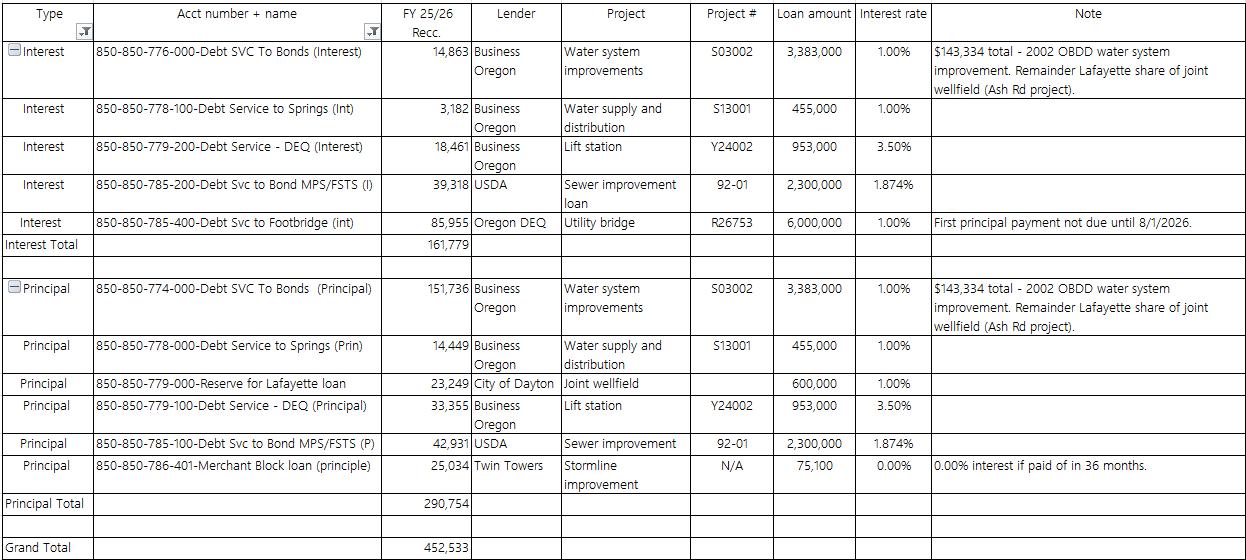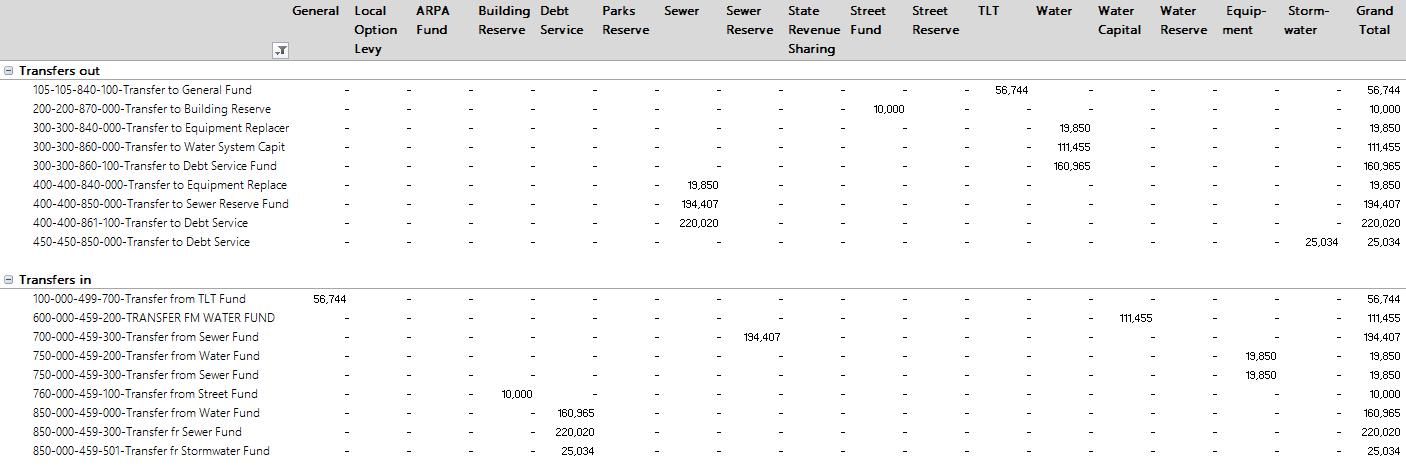CITY OF DAYTON 2025 - 2026 RECOMMENDED BUDGET

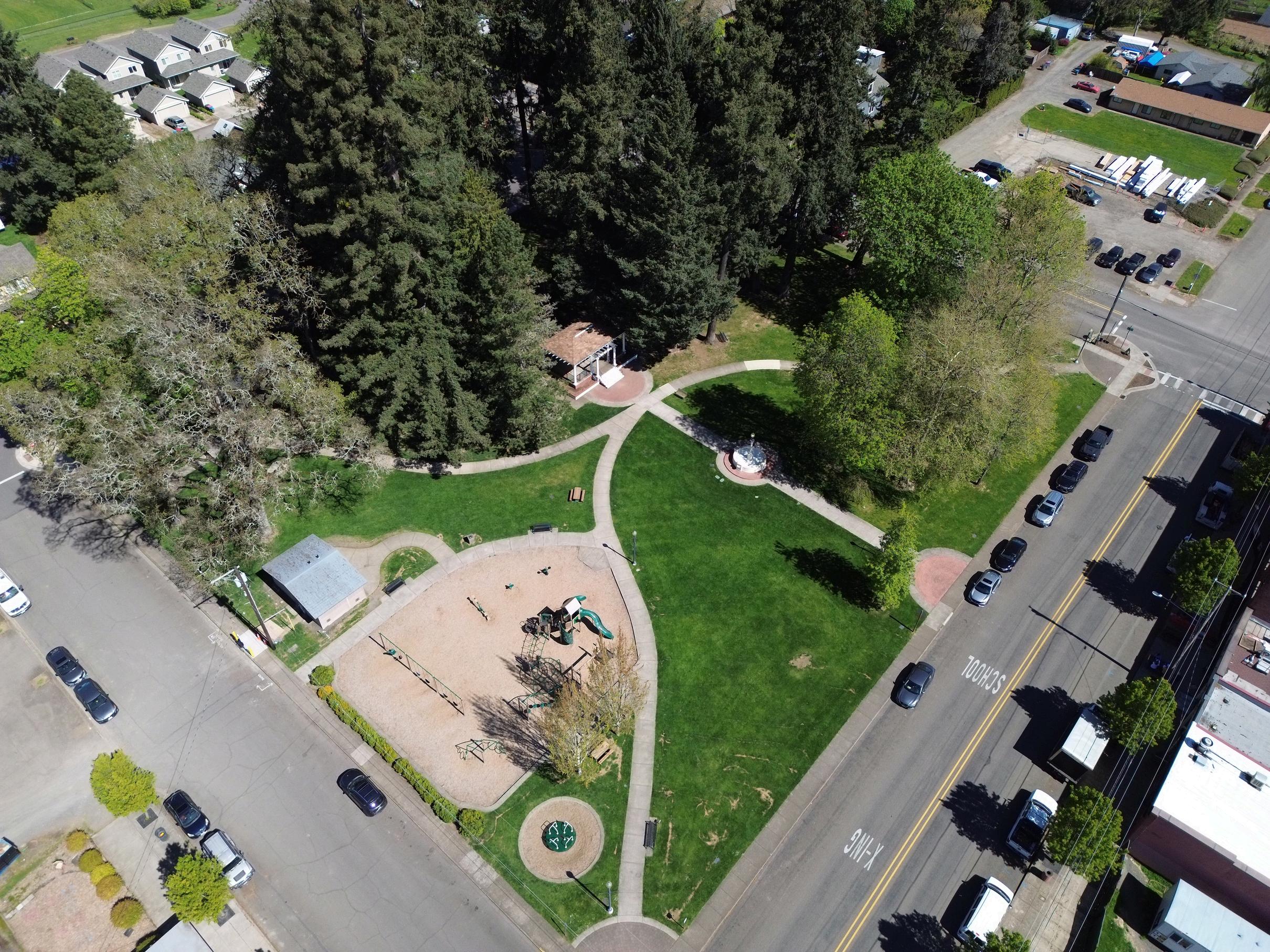
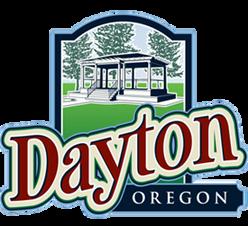
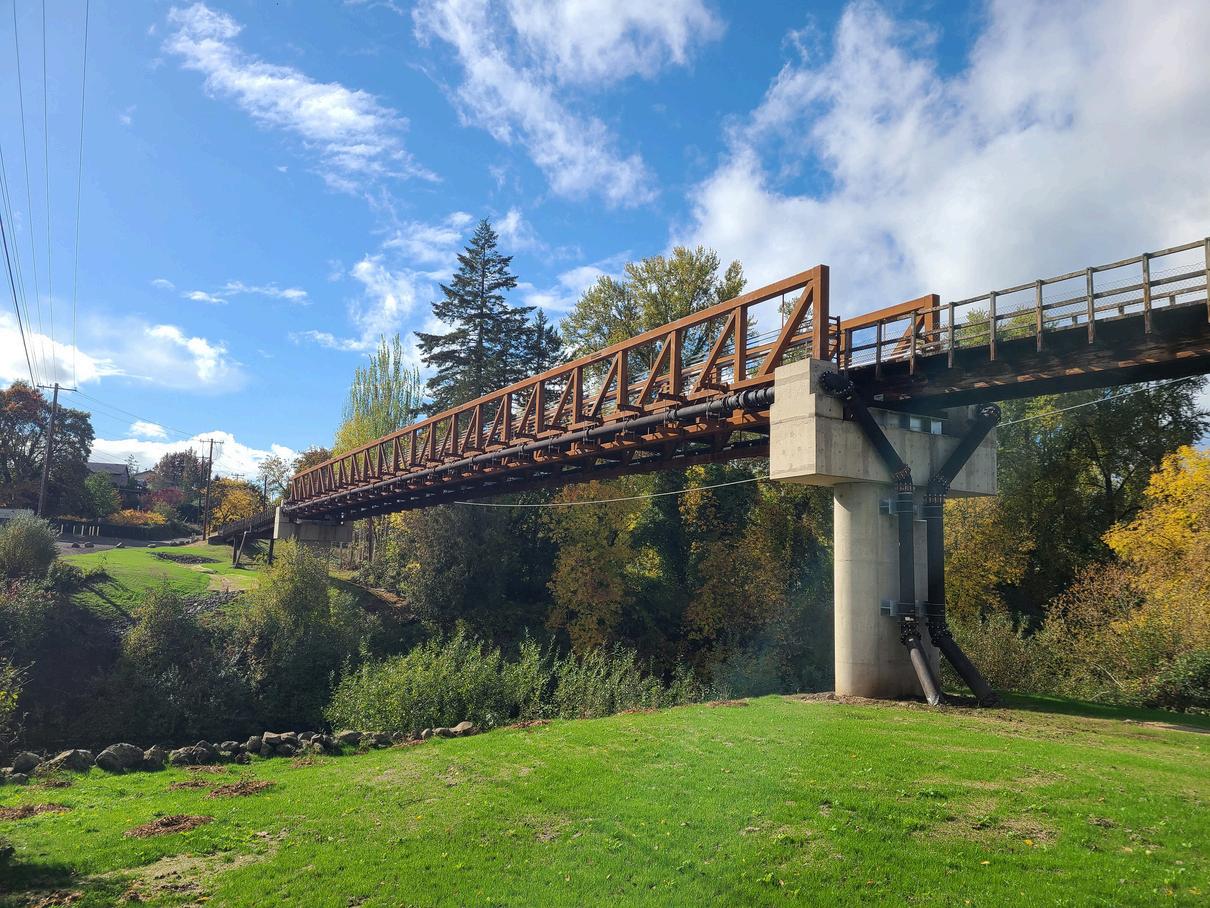






CITY COUNCIL MEMBERS
Annette Frank, Mayor
Drew Hildebrandt, Council President
Kitty Mackin
Jim Maguire
Robin Pederson
Chris Teichroew
Luke Wildhaber
Angie Gonzalez
Daniel Holbrook
Steve Hopper
CITY STAFF
Jeremy Caudle, City Manager, Budget Officer
Rocio Vargas, City Recorder
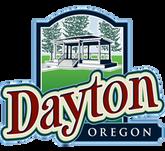

jcaudle@daytonoregon.gov
416 Ferry Street / PO Box 339, Dayton, Oregon 97114 503-864-2221
www.DaytonOregon.gov

To: Mayor Frank and Budget Committee
From: Jeremy Caudle, City Manager
Date: Monday, April 28, 2025
Re: Budget message for the FY 25/26 recommended budget
This is to present the City Manager’s recommended budget for the �iscal year beginning July 1, 2025 and ending June 30, 2026. The total city budget is $8,118,492, a -$1,758,715 (-17.81%) change compared to the current �iscal year budget. Most of this decrease is due to the completion of construction projects that were funded in the current �iscal year’s budget. The budget net of interfund transfers is $7,300,167.
The current �iscal year has been a period of transformative change. To give a few examples:
The city �inished construction of the new utility bridge. A $1 million grant from Yamhill County, along with a $6 million loan from the Oregon Department of Environmental Quality, �inanced this project.
The Highway 221 pump station project is nearing completion. Financing from Business Oregon with a $953,000 loan and $75,000 grant is paying for this project.
The city implemented an Urban Renewal Agency, ensuring a plan and funding stream to invest in our historic downtown. The city also increased its transient lodging tax.
The city completed a buildable land inventory, setting the stage for a housing needs analysis. This analysis will develop policy recommendations to achieve the city’s goals for new home construction.
The city’s progress on updating its transportation system plan and parks master plan continues with grant support from the state.
The city completed the sale of the remaining 12 Dayton Villages lots. This provided a source of income to be used for public facility construction. With the restricted covenants in place, this project also guarantees the long-term affordability of the lots.
The Merchant Block renovation is nearing completion. This will bring a hotel and commercial units to the city, boosting our desirability as a tourist destination.
In spite of these successes, the city must address several issues in the upcoming �iscal year. First among these is ensuring a reliable source of drinking water. We are pursuing several options, including the use of the City of Lafayette’s Ash Road transmission line to access water through McMinnville Water and Light. This budget tackles these issues.
Second, we must reestablish strong �inancial management and accounting practices. Last summer, the City Manager and Accountant both departed, resulting in the loss of institutional knowledge at a critical time. During the interim, the city fell behind on accounting and �inancial reporting tasks, and we are still working to catch up. For example, the �inancial statement audit for FY 2023/2024 has been delayed, and the external auditor has not yet completed the work. Consequently, the �inancial data used in this budget are unaudited and may be subject to revision. While I believe the assumptions and estimates in this budget are reasonable, they are not perfect. Before taking on any new projects or obligations, we must regain our footing
Third, the volume of projects, grant and loan activity, and organizational change over the past year would stretch the capacity of a city twice our size. As a small city with limited staf�ing, we must now focus on catching our breath. We need to close out projects that are in progress or nearing completion, consolidate operations, and improve internal coordination. This means limiting new initiatives in the short term and ensuring that our service delivery model remains realistic and sustainable. We must get back to basics and deliver core services well.
This budget aims to bring the General Fund back into �iscal balance after years of de�icits funded by reserves. Without intervention, the General Fund balance is projected to decline from more than $532,487 in FY 2020/2021 to around $90,235 by June 30, 2026. This is not sustainable. To address �iscal sustainability across all funds, I am recommending a combination of new revenue sources including fee increases and updated user charges as well as cuts. While the focus this year is on the General Fund, we must reverse de�icit spending in the utilities funds and other funds to ensure �iscal and operational sustainability.
This budget cuts operating expenditures. Due to the depth of the General Fund de�icit, this budget also includes reductions to personnel costs. These reductions may involve changes to bene�it levels, work hours, staf�ing levels, or some combination. I have outlined a range of options for the Budget Committee to consider. Rather than pre-selecting a speci�ic solution, I am asking the Budget Committee to provide policy direction. If no speci�ic options are selected, I will proceed prior to budget adoption with making the necessary reductions to achieve an adequate ending fund balance for the General Fund
This is not the budget that I was hoping to prepare in my �irst year as your City Manager. But it is the one that is needed. I believe that with discipline, transparency, and collaboration, we can stabilize our �inances and position the city for success. While the choices before us are dif�icult, amazing opportunities are on the horizon. By focusing on our core services and being strategic in our decisions, we will build on the progress we’ve made and emerge stronger and more resilient.
The remainder of this budget message is organized as follows. I begin with an overview of signi�icant changes in the General Fund, including a discussion of the proposed expenditure reductions necessary to achieve �iscal balance. I then turn to the city’s utility funds, with an analysis of projected operating costs and a review of how current utility rates align with future service needs. After that, I outline changes to the city’s other major funds, including the proposed implementation of a dedicated Stormwater Fund to better track and manage related expenditures. I conclude with a summary of the personnel budget, notes on key accounting policies, and a description of the next steps in the budget process.
General Fund balance history and projected de�icit without intervention
Figure 1 depicts the General Fund’s ending balance from FY 2014/2015 to the present. The red, dashed line indicates projected ending balances for FY 2024/2025 and FY 2025/2026.
As the graph shows, General Fund balance has declined from a high of nearly $700,000 in FY 2017/2018 to a projected ending balance of $105,472 for FY 2024/2025. The recommended FY 2025/2026 budget projects an ending balance of $112,307. The recommended budget’s surplus of $6,835 reverses a trend since FY 2020/2021 of declining fund balance
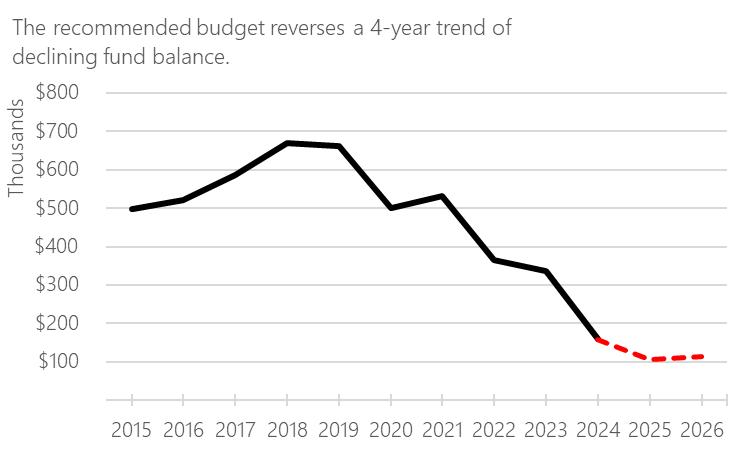
The Government Finance Of�icers Association (GFOA) recommends “at a minimum, that general-purpose governments, regardless of size, maintain unrestricted budgetary fund balance in their general fund of no less than two months of regular general fund operating revenues or regular general fund
operating expenditures.” 1 Two months of General Fund operating expenditures totals $112,179. The recommended budget’s General Fund balance is right at the GFOA’s recommended minimum level. Without cuts to personnel, the General Fund’s FY 2025/2026 ending balance is projected to be $90,235. This estimate already includes cuts to operations.
Figure 2 illustrates each �iscal year’s �iscal surplus or de�icit since FY 2014/2015. For six out of the past twelve years, the General Fund operated with a �iscal de�icit, which means that expenditures exceeded revenues. The General Fund experienced its largest de�icit in FY 2023/2024 when expenditures exceeded revenues by $197,289.

Proposed General Fund operating and capital reductions
To maintain the General Fund’s balance at the two months’ expenditures minimum, the recommended budget includes cuts to operations and personnel. The table below shows the General Fund budget by expenditures category. The “$ change” column shows the increase or decrease compared to the FY 2024/2025 budget. Of these categories, only the materials and services category has increased. However, fees, licenses, and permits offset 44.79% of our materials and services expenditures.
1 “Fund Balance Guidelines for the General Fund.” Government Finance Officers Association. Accessed 4/21/25 via: <https://www.gfoa.org/materials/fund-balance-guidelines-for-the-general-fund>
Table 2 lists the General Fund operating and capital accounts with the most signi�icant cuts. (This does not include accounts that are associated with offsetting user fees or permits.) The account with the largest cut is for community center maintenance. This budget proposes temporarily closing the community center for reservations and events until we can develop a �inancially sustainable plan for the center’s operation. Since FY 2021/2022, rental fees have covered, on average, 72.12% of the maintenance costs of the center. (This does not include utilities and staff time.) Considering the General Fund de�icit, as well as the need to reduce our personnel budget, I believe it is prudent to consider the temporary closure of the community center. The recommended budget maintains a small appropriation for routine issues, such as the elevator inspection. If the Budget Committee agrees with a temporary closure, then reservations made up to this point will be honored.
Table 2: General Fund significant cuts by account
-$66,438
Even with the cuts listed above among other smaller cuts it was necessary to �ind savings of $15,498 to achieve the ending balance listed above. The only other viable option to achieve savings at that level is to consider cuts to our personnel budget.
For the recommended budget, I reduced the General Fund personnel accounts using a pro-rata formula to achieve the savings just noted. An exception is that the pro-rata formula does not apply to Public Works wages, which I’ve maintained at current levels. Public Works positions are essential to
maintaining life, health, safety, and regulatory compliance. I therefore do not recommend cuts to Public Works positions.
The pro-rata formula is a technique to reduce expenditures to the level needed to attain my target ending balance. I request direction from the Budget Committee on how exactly to achieve that level of savings so that I can �inalize the line-item budget. The Budget Committee may choose among the personnel cut options below. The Budget Committee may also evaluate cuts elsewhere, increases to revenues projections, or other options to arrive at the necessary level. The Budget Committee may also choose to make no cuts, instead using reserves to cover the �iscal de�icit. I do not, however, recommend this option. What follows is a list of possible options to reduce the personnel budget.
Eligible employees currently pay 10% of the health insurance premium, and the city pays the remaining 90%. According to CIS’s rules, “If the Member contributes toward the cost for dependent coverage, then the member must pay at least 50% for any coverage level.” The city does contribute toward the cost for dependent coverage. The Budget Committee may choose to recommend a reduction in the city’s contribution to premiums. The table below lists the current premiums by plan level and split between employee and employer. The table below only shows premiums for the health insurance plan, since the cost for this bene�it is signi�icantly higher than our other insurance coverages. If the Budget Committee wants to see similar data for our dental and other plans, I can provide that.

Table 4 lists the projected General Fund savings under four different employer contribution scenarios. According to the data in the table, reducing the employer share from 90% to 60% results in savings that are close to the targeted level noted above. The total General Fund cost includes health, dental, and vision insurance, as well as HSA contributions. Any changes to coverage levels would apply organization-wide, so the city’s other funds would have reduced costs because of these changes.
Table 4: Health insurance premium scenarios and savings
Option 2. Reduction to Public Employee Retirement System (PERS) contributions. The city currently pays the 6% Individual Account Program (IAP) contribution on behalf of employees into PERS. PERS refers to this as “employer paid pre-tax contributions” (EPPT). Alternatively, the city can withhold the 6% from employees’ paychecks and remit the amount to PERS under “member paid pre-tax contributions” (MPPT).
Oregon Administrative Rules do not allow employers to split the 6% contributions. It must be either EPPT or MPPT. However, employers are allowed to require one group of employees to contribute 6% under MPPT while the city can cover another group at 6% EPPT.
Table 5 below shows the General Fund’s current PERS costs. The �irst row shows the city’s PERS costs with both the employer contribution and payment for the 6% IAP contribution. The second row shows just the employer contribution, assuming employees will start paying the 6% IAP contribution. This assumes the change from EPPT to MPPT would apply to all employees. If that’s the case, then the city’s other funds would also see savings. Making a change from EPPT to MPPT would require a change to the personnel policies and procedures manual.
Table 5: General Fund PERS scenarios
General Fund PERS - with 6% EPPT
General Fund PERS - without 6% EPPT
$63,962
$50,920
Difference: $13,042
Option 3. Reduction in hours for non-Public Works personnel.
The table below presents a third option for generating savings in our personnel budget. This option is to reduce hours. The set of �igures presents the anticipated savings from implementing 96 furlough hours. This corresponds to the number of hours for the 12 holidays the city observes. The idea here is that employees would not be paid for the holidays: it would be unpaid time off.
The second set of �igures shows the projected savings for reducing hours from 39 to 35 hours per week. This would result in reducing City Hall’s open hours to adjust to the decreased coverage. My salary is factored into the �igures below the same as other non-Public Works employees.
The �igures in Table 6 show annual wages plus FICA. Any reduction in hours would also result in savings to PERS. I didn’t include the PERS savings since I mentioned this as a possible option above. However, for the next Budget Committee meeting, I could factor PERS into the calculations below if you are interested in evaluating this option further.
100% staffing
$234,109 96 furlough hours
Option 4. Reduction in force.
$225,634
Lastly, the Budget Committee may consider a reduction in force. In the appendix, you will �ind a table that lists all positions, along with the allocation of each position’s wages across all funds. This can help you estimate the savings in annual wages if you were to eliminate speci�ic positions. Eliminating positions would also generate savings in health insurance, PERS, and so on. If the Budget Committee is interested in exploring this option, then we will need to have a discussion on the implications of eliminating the positions under consideration.
Property taxes. The recommended budget estimates $264,882 in General Fund property tax revenues. This is the �irst year that the frozen base of $11,828,602 will be in effect. The frozen base represents the taxable value of property within the boundary of the urban renewal district. Each increase in the tax base over the frozen base will then go to the Urban Renewal Agency (URA) to fund URA projects.
This affects the General Fund because any growth in taxable value within the urban renewal district no longer contributes to General Fund revenues it is instead redirected to the Urban Renewal Agency. As a result, the General Fund will only receive property tax revenue based on the frozen base amount plus the tax base outside of the urban renewal district. This limits the ability of the General Fund to bene�it from new development or increases in property value within the district. This shift
places greater pressure on other revenue sources or requires expenditure reductions to maintain a balanced budget.
Other revenues sources. Table 7 lists each category of General Fund revenue along with the change compared to the current year’s budget. The fees and charges for services category has the largest net increase. This is in spite of a -$30,000 change in rental fees for the community center due to the recommended temporary closure of the center. Increases in planning and development permitting fees offset the decrease in rental fees. These fees are intended to cover the cost of processing land use applications, as well as monitoring development.
The next largest increase is due to a $56,744 transfer in from the Transient Lodging Tax Fund. The change is due to projected increases in TLT revenues due to the completion of the Merchant Block hotel. State law allows up to 30% of TLT revenues to be used for general governmental purposes, hence the transfer to the General Fund.
The decline in investment income is due to the projected FY 2024/2025 shortfall of $16,338 compared to what’s budgeted. In other words, investment income for the current �iscal year has not met our targets. It is prudent, therefore, to budget this source of revenue at a lower level for the new �iscal year.
Table 7: Summary of General Fund revenues by category
The following table shows major changes in expenditures by account title across General Fund cost centers. These are for changes that are greater than a $5,000 increase or decrease. The table also provides an explanation for the change.
Table 8: Summary of major General Fund expenditures changes by account title
Account title Recommended FY 25/26 $ Change Explanation
Type B Permit Inspections
Planning Services
Dayton Harvest Festival
Engineering Services
Building Inspection Services
Maintenance Operator 2
PERS Retirement
Data Processing
Audit
Tourism/Econ Devel Director
Travel & Meetings
Community Center Rental Refund
Holiday Lighting/Banners
City Manager
$50,000 $47,000 Projected increase from new development. Offset by fees.
$45,000 $30,000 Projected increase from new development. Partially offset by fees.
$15,000 $15,000 Placeholder for July 4 fireworks. Needs new account. Offset 100% by donations.
$22,026 $11,026 Projected increase from new development. Partially offset by fees.
$14,000 $9,000 Projected increase from new development. Partially offset by fees.
$11,067 $7,817 Reclassification of positions.
$62,531 $6,806 Projected increase in employer share of PERS rates.
$24,382 $6,232 Projected increase in accounting software. New server.
$12,136 $5,071 Based on estimated total of $40,000 across all funds.
$11,911 ($5,285) Reduced General Fund allocation of this position.
$1,813 ($6,687) Elimination of non-essential training.
$0 ($8,000) Recommended temporary closure. Also, see note below. 2
$0 ($8,000) Recommended reduction.
$27,733 ($8,272) Pro rata formula to reduce personnel budget. New City Manager's salary is less than previous City Manager.
2 The reduction in expenditures in this line item also reflects a change in accounting treatment for refundable deposits. In prior years, deposit refunds were recorded as expenditures. Beginning with the new fiscal year, deposits will be recorded as liabilities when received and reduced when refunded, consistent with standard accounting practices. This change improves the accuracy of the city’s financial reporting and does not reflect a reduction in actual service costs.
Table 8: Summary of major General Fund expenditures changes by account title Account
Plan Check Services
CLG Facade Improvements
Park Maintenance
Community Center Maintenance
Maintenance
Operator 1
Health Insurance
$6,000 ($9,000) Projected decline in new home permits.
$0 ($10,000) Typically grant funded. If grants are awarded, increase through budget amendment.
$15,000 ($13,000) Recommended reduction.
$6,000 ($16,000) Recommended temporary closure.
$22,041 ($19,133) Reclassification of positions.
$49,536 ($19,438) Pro rata formula to reduce personnel budget.
2. Utilities funds: Financial outlook and proposed rate adjustments.
Ensuring a reliable source of drinking water
The City is pursuing a temporary arrangement to access water through Lafayette’s Ash Road transmission line, using water purchased from McMinnville Water and Light (MW&L). This interim solution addresses urgent reliability issues with Dayton’s existing water supply sources and will remain in place while long-term solutions are developed. Figure 3 depicts the Ash Road transmission line. The red lines show the reversal of �low through this line to Dayton’s water treatment reservoir.
This arrangement raises �inancial implications. While the Intergovernmental Agreement (IGA) between Dayton and Lafayette currently splits operational and debt service costs for the joint water system, the interim water solution limits Lafayette’s access to that system. As such, the budget assumes Dayton will cover 100% of shared maintenance and debt service costs typically split under the IGA. Final terms and responsibilities, including how water will be billed and how system usage will be measured and controlled, are still being negotiated and may affect the budget. I have also appropriated a payment of $67,000 to MW&L, representing the anticipated higher cost of purchasing water from them. In sum, this budget takes a cautious approach by planning for Dayton to bear additional water system costs until a revised agreement is in place.
My year-end estimates for FY 2024/2025 include an expenditure of $102,000 in the Water Fund to pay for the Ash Road project. This includes materials and services to up�it the water treatment plant, as well as additional engineering expenditures. If progress on this project is delayed, then some of those expenditures may occur in the next �iscal year. Prior to budget adoption, I should have a clearer
picture on the status of this project. There may be changes for this item between the recommended and adopted budgets.

At the April 16 water town hall meeting, I mentioned other options that the city is pursuing to guarantee our water supply. One of those options is our efforts to secure funding for the Fisher Farms wells improvements project. At the start of the legislative session, we submitted a $1.9 million funding request to bring the four Fisher Farms wells online. The state budget process is ongoing, and we won’t know the outcome of that request until after the Budget Committee meeting. If our request is granted, we can adjust the budget after adoption.
One task that we will need to complete for the Fisher Farms wells projects is a water quality analysis. I obtained a quote from our hydrogeologist of record, GSI Water Solutions, Inc., to complete this. The quote totals $206,588. The Water Fund does not have suf�icient resources to pay for this. We would need to secure additional funding, likely through debt �inancing. This is going to require further debate and evaluation. Due to the timing involved, consideration of how to �inance everything that’s needed to bring the Fisher Farm wells online will likely occur after budget adoption.
In the Water Fund, I also budgeted $8,000 for GSI to complete an extension of one of our water rights, as well as $12,000 for them to complete a water loss audit. Our “Water Management and Conservation Plan” and Oregon Administrative Rules require us to complete an annual water loss audit.
Figure 3 illustrates the Water Fund’s balance since FY 2017/2018. FY 2024/2025 is projected to have a de�icit of $293,192, and FY 2025/2026 is projected to have a de�icit of $255,915 Table 9 shows changes in expenses and revenues categories from FY 2020/2021 through FY 2025/2026. As you can see, prior to FY 2024/2025, revenues and expenses matched each other, and the Water Fund’s balance was relatively stable.
The expense category with largest increase from FY 2020/2021 through the recommended budget is materials and services, with a 172% increase. Professional and engineering services are driving this change, with projected increases of 418% from FY 2020/2021 through the recommended budget. Much of this increase is due to the additional engineering costs for the Ash Road project, as well as the water rights and water loss audit projects mentioned above.
The expense category with the next highest increase is personnel. This category is projected to increase 73% over the timeframe displayed. Of that category, $94,675 of the increase is for bene�its over the timeframe indicated. This is due to the ever-increasing cost of health insurance and PERS contributions. However, salaries and wages increased $115,355 over that timeframe. Much of this is related to reclassifying the Public Works Laborer position from part-time to full-time, the addition of the Tourism and Economic Development Director position, and a greater allocation of the Library Director’s time to the Water Fund.
The recommended budget includes a 5% increase to the volumetric rate. Due to the increase needed in the Sewer Fund, as described below, the recommended budget uses reserves to cover the �iscal de�icit, as opposed to recommending an even greater rate increase. Nonetheless, if we don’t address the �iscal de�icit this year, then we will need to address it during the FY 2026/2027 budget.

Table 9: Water Fund expenses and revenues by category from
Figure 5 depicts changes in Sewer Fund balance since FY 2017/2018. The recommended budget for the Sewer Fund does not include signi�icant changes to staf�ing or operations. The budget for those categories is intended to keep operations at current levels.

This most signi�icant change to the Sewer Fund is a $258,897 increase in transfers out compared to the FY 2024/2025 budget. A summary of what’s contributing to that increase is as follows:
$51,816 in principal and interest for a Business Oregon loan to �inance the Highway 221 pumpstation
$85,955 in interest for the DEQ loan to �inance the utility bridge. (The �irst principal payment of $80,377 is due in FY 2026/2027. Then, the total annual debt service will be due biannually, with the �irst year’s payment totaling $243,654.)
A one-time transfer of $107,461 to maintain the required reserve level for the DEQ loan.
A one-time transfer of $194,407 to the Sewer Reserve Fund. The Sewer Reserve Fund ended FY 2023/2024 with a balance of -$1,016,465. The negative balance was due to expenses paid but not yet reimbursed for the utility bridge project. My FY 2024/2025 projections show the Sewer Reserve Fund with a balance of -$73,144. The transfer budgeted for FY 2025/2026 is intended to ensure a positive balance at an adequate level.
This budget does not include funding for a wastewater facilities master plan, which the City Engineer has recommended. The last plan was completed in 2021, with a facilities plan amendment completed in 2015. The estimated cost to update the plan is $175,000. Without cuts or even greater rate increases, the Sewer Fund does not have the resources to pay for this plan.
Another project that the City Engineer recommended is dredging of the lagoons, which has never been done. The estimated cost of this project is between $2 million and $3 million. This project, along with the master plan update, would need to be funded through loans or grants.
Table 10 presents Sewer Fund expenses and revenues by category since FY 2020/2021. Many of the factors described above for the Water Fund related to increases in expenses also apply to the Sewer Fund.
During the timeframe indicated, materials and services increased $141,810 and personnel services increased $146,705 Of the materials and services category, expenses for professional services, insurance, and engineering services increased 185%, driving much of the change in that category. For the personnel services category, bene�its increase $70,818 much of that driven by increases in PERS contributions and health insurance premiums. Salaries and wages increased $146,705 over that timeframe.
The recommended budget includes a sewer rate increase of 19% across all customer classes. Based on projected expenses, this was the increase needed to break even. If the Budget Committee recommends a smaller increase, then offsetting cuts will be necessary. The Sewer Fund’s projected ending balance for FY 2025/2026 is already at too low a level, in my professional opinion. I do not recommend falling below the projected level.
The Local Option Levy Fund requires either an in�low of resources or cuts for FY 2025/2026. Otherwise, the fund will have no resources to continue paying for services. Figure 6 shows the decline in fund balance for this fund since FY 2014/2015. This fund’s reserves are projected to be exhausted by the end of the current �iscal year.
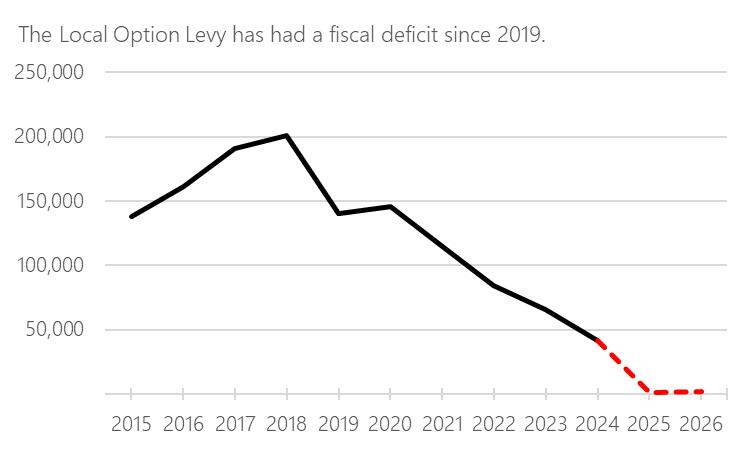

Figure7showstheamountofsurplusorde�iciteach�iscalyearsinceFY2014/2015.Since2019,this fund’sonlysourceofrevenues thelocaloptionpropertytaxlevy hasnotbeensuf�icienttopayfor services.
ThelargestcategoryofexpenditureisthelawenforcementservicescontractwiththeYamhillCounty Sheriff’sOf�ice.Thisisprojectedtocost$278,705.PaymentstotheYamhillCommunicationsAgency, whichprovides911service,isestimatedat$36,275.Personnelservicesarebudgetedat$86,445.This includesourCodeEnforcementOf�icer,aswellasstafftimeformunicipalcourt.
The budget for the Local Option Levy Fund includes a new public safety fee, which is projected to generate$67,500inrevenue.Thisisintendedtocoverthede�icit,ensuringthisfundhasresources availabletocontinuepayingforservicesatthecurrentlevel.Theproposalistochargea�lat$6.25fee permonthperutilitycustomer
IamrequestingdirectionfromtheBudgetCommitteeonifyouwishtoimplementthisnewfee.The feeamountlistedaboveisjusttheamountnecessarytobreakeven.TheBudgetCommitteeshould evaluate implementing a fee at a higher level. This would ensure the fund’s ability to accumulate enoughresourcestomeetcash�lowneeds,aswellastorespondtoanyunanticipatedexpenditures overthe�iscalyear.
If the Budget Committee does not recommend implementing a new public safety fee, then it must decidewhattocutfromthisfund.Areductioninservicelevelsforourlawenforcementservicescontract would mean fewer patrol hours from the Yamhill County Sheriff’s Of�ice. The Sheriff’s Of�ice needsananswertothisquestionassoonaspossiblesothattheycanplanaccordingly
IftheBudgetCommitteedoesrecommendimplementingthefee,thentheCityCouncilwillneedto adoptanordinancetoestablishit.
ThisbudgetrecommendsestablishinganewStormwaterFundandassociatedfee.TheCityEngineer has recommended creating a new stormwater fee to fund maintenance and improvements to our stormwatersystem.
The only expense in this fund for FY 2025/2026 is $25,034 in principal payments for a 3-year, $75,100loan The developer for the Merchant Block project is providing this loan interest free to �inance re-pairs to the failed stormwater line that serves the property. The line is around 100 feetinlengthandhascompletelycollapsed.
Theproposedmonthlyfeeis$2.32perutilitycustomer.Oncetheloanispaidoff,therevenuesgeneratedfromthestormwaterfeecouldpayformasterplanning,repairs,andconstructionofnewstormwaterfacilities.
If the Budget Committee does not recommend implementing the fee, then we will need to record the loan and associated repayment in another fund.
If the Budget Committee does recommend implementing the fee, then the City Council will need to adopt an ordinance to establish it.
In the current �iscal year, the city completed the sale of the 12 Dayton Villages lots, yielding $308,515 in revenues. I propose allocating these revenues towards the construction of a new City Hall and library. This �iscal year, the city also received con�irmation that $500,000 in Congressionally-directed spending has been allocated to the city for the City Hall and library construction project. These funds will be administered through USDA, and I have included this as a resource in the budget to allocate towards this project. Additional steps are necessary, once we reach that point, to start receiving these funds. Both revenue sources total $808,515 that are available to fund the project. We received con�irmation that the USDA funds can be used for design, but the design must immediately lead to construction.
I am seeking direction from the Budget Committee on if you agree with my plan to allocate these funds to the City Hall and library project. If so, then my recommended next step is to hire an architect at the start of the new �iscal year to begin designing the new facility through a collaborative process involving key stakeholders. The design process will include cost estimates that can help us determine if the current resources are adequate for the project and for our goals.
The City Hall and library construction project is necessary due to the deteriorating condition of the current building. The basement �loods during heavy rain, and the in�low of moisture has led to concerns about mold. In addition, the building was constructed before the advent of modern seismic standards. It is unlikely that the current building could withstand a moderate to severe earthquake, which would affect the city government’s ability to recover from such an event. Starting this project should be a high priority for FY 2025/2026.
My projections indicate that the State Revenue Sharing Fund will need an interfund transfer from the General Fund to avoid reaching a negative balance by �iscal year-end. Expenditures have exceeded this fund’s sole source of revenues intergovernmental transfers from the State of Oregon. We must make cuts to this fund to achieve balance.
Historically, this fund has paid for city events, City Council training, community giving, and similar initiatives. The recommended budget eliminates most training and City Council expenses, including attendance at League of Oregon Cities (LOC) conferences. I did budget $250 for attendance at the LOC’s regional small cities meetings, which are held quarterly.
Other details include:
Shifting $4,000 for the community clean up event into this fund from the Local Option Levy Fund.
Eliminating the community giving program. If the recommended budget is approved, the city will not provide grants to community groups for FY 2025/2026.
The events budget is limited to:
o $4,000 - Dayton Friday Nights
o $1,500 - National Night Out
o $2,500 - Cinco de Mayo
o $500 - Halloween
o $2,000 - Breakfast with Santa
Eliminating funding for language classes.
Funding a $2,500 contribution to the DCDA, per their request.
If the Budget Committee wishes to restore or increase funding for the activities traditionally accounted for in this fund, then cuts or alternative funding sources will be required.
Major expenditures in the Equipment Replacement Fund include:
$5,000 - rebuild backhoe engine
$600 - aerator thatcher
$2,000 - boom truck batteries
$1,200 - chainsaw blower
$6,000 - 8 tires for vac truck
The Street Fund maintains funding for the Transportation System Plan. Other than that, we are not planning major initiatives for programming through the Street Fund and Street Reserve Fund. We applied for a Small Cities Allotment grant of $250,000 for paving and resurfacing projects. If awarded, we will appropriate the grant through an amendment after budget adoption.
The total personnel budget without the pro-rata reduction described above is $1,458,019. This represents the total personnel cost at 100% staf�ing with no reduction in bene�its, hours, and pay.
A breakdown of this amount is as follows:
Salaries and wages - $877,387, a -$61,687 change compared to the current year’s budget. Some of that change is due to salaries and wages having been budgeted higher than necessary this �iscal year. Lower starting salaries for new staff compared to the previous incumbents also contributes to this change.
Bene�its - $580,632, a $17,438 change compared to the current year’s budget.
This budget does not fund cost of living adjustments (COLAs) or merit increases due to the �iscal de�icitissuesdescribedabove.Thisbudgetdoesfund,however,payincreasesforcertainPublicWorks positions.Thepayincreasesaredependentontheattainmentofoperatorcerti�ications.
Thisbudgeteliminatesfundingforvirtuallyallemployeetraining again,duetothe�iscalde�icitissuesdescribedabove.Exceptionsincludein-persontrainingfortheFinanceDirectorfromour�inancialsoftwareprovider,Caselle.AnotheristoenrolloneofourPublicWorksemployeesinacommercialdriver’slicense(CDL)program.ACDLisrequiredtooperatethevactruckandstreetsweeper, andcurrentlyonlythePublicWorksSupervisorhasaCDL.Irecommendtrainingatleastoneadditional Public Works employee on this equipment, including attaining the required CDL, to ensure redundancy. Lastly,sometrainingfundsarebudgetedintheTransientLodgingTax,LocalOption Levy,andutilitiesfundsforprofessionaldevelopmentandmaintainingcerti�ications.
Hereisasummaryofothersigni�icantbudgetchangesandotheritems:
A $4,715 funding request from Yamhill County Transit is not recommended. In the past, this contribution has been recorded in the State Revenue Sharing Fund.
A request to fund a new, part-time library position is not recommended.
Adding a push noti�ication feature to GOGOV is not recommended
This budget does not address the acquisition of Dayton Landing, a topic that has received recent news coverage. 3 If negotiations proceed on this topic, then it would need to be addressed through a supplemental budget process, likely in the new �iscal year.
The contract for our lobbyist, CFM Advocates, expired in February. Funding to renew the contract, which is paid out of the Sewer and Water Funds, is not in the recommended budget. The cost of the contract is around $43,000, and it has been split equally between the Sewer and Water Funds.
A pay and bene�its study, with an estimated cost of $5,583, is not funded in the recommended budget. This project remains a high priority, as it is critical to ensuring the city remains competitive in attracting and retaining quali�ied employees. It had been my goal to include funding for this study in the new �iscal year; however, given the �iscal de�icit challenges outlined earlier, it was deferred. I recommend that the Budget Committee discuss and provide direction on whether this project should be funded despite the current budget constraints above.
This budget continues funding for an outside accounting �irm to provide support for two to three days per month. The amount programmed in the recommended budget is $36,000. Until we build a �irmer foundation of internal processes and fully reestablish institutional knowledge in the Finance Department, this support will ensure continuity, compliance, and timely �inancial reporting.
3 Scott Unger. “County supports Dayton Landing transfer.” News Register. 1/9/25. Accessed 4/25/25 via: <https://newsregister.com/ article?articleTitle=county-supports-dayton-landing-transfer--1736450349 50842->
I budgeted $4,000 for a new server on the recommendation of our IT consulting �irm.
I received a quote to install telemetry at the McDougal wells after I had �inalized the recommended budget numbers. This quote totals $53,928. We should consider adding this to the budget prior to budget adoption.
6. Summary of major revenue and expenditures changes.
extra cost of purchasing water from McMinnville Water and Light. Recorded in the "misc expense" account but should be moved to another account before budget adoption.
26 Equipment Replacement 750 Net decrease due to $50,000 tractor replacement budgeted in FY 24/25 but not recommended in FY 25/26.
27 Building Reserve 760 Building construction account. Programming Dayton Villages sales proceeds and USDA grant for city hall/library construction.
28 Parks Reserve 780 Courthouse Square Park bandstand project was budgeted and completed in FY 24/25.
tions
31 Multiple N/A Projected increase in data services account. Includes IT services, Casselle accounting software subscription, and so on.
and ending balances, and contingencies:
expenditures and financing uses:
100 Planned donations to cover July 4 fireworks. Previously recorded in State Revenue Sharing Fund. Recorded in "miscellaneous revenue" account. Should be recorded in a new donations account prior to budget adoption.
To recap, below I list key areas on which I’m seeking direction from the Budget Committee:
Temporary closure of community center to develop a sustainable funding model. Reservations made up to this point will be honored.
Selection of options to achieve targeted ending balance in the General Fund. This may include one or more of the options presented to reduce personnel expenditures
Increasing the water and sewer rates by the amount recommended. If not, offsetting cuts must be found elsewhere.
Implementing a new public safety fee and new stormwater fee. If not, we must identify cuts in the local option levy fund. If the stormwater fee is not recommended, we must identify a different way to pay for the stormwater line replacement loan.
Agreement on programming the sales proceeds from Dayton Villages to constructing a new city hall/library.
The Local Budget Law requires municipal budgets to be balanced. The law de�ines a balanced budget as being “reconciled so that the total amount of expenditures and other requirements in each fund equals the total amount of resources in the fund for the same period” (O.R.S 294.388[1]). As shown in the fund �inancial summaries below, each fund meets this requirement.
This budget does not anticipate any changes in the basis of accounting used in previous years, as well as any other �inancial policies, apart from the accounting for refundable deposits, as explained above.
Many team members contributed to the budget process, and I would like to recognize their efforts. First, all the department heads played a role in shaping budget requests, not only for their departments, but other areas, as well.
This year, we initiated a budget review team meeting to bring differing perspectives and greater quality control into the process. The following team members participated on the budget review team: Rocio Vargas, City Recorder; Don Cutler, Public Works Supervisor; Cyndi Park, Library Director; DeAnna Ball-Karb, Finance Director; Dave Rucklos, Tourism and Economic Development Director; Jason Shirley, Code Enforcement Of�icer; and Jake Taijala, Maintenance Operator 1.
Lastly, Ricci Haworth, Of�ice Specialist 2, provided data on our utility billing and production, which assisted in my development of utility revenue forecasts.
The Budget Committee meets on May 5 to receive the recommended budget. The Budget Committee will also hold public hearings at this meeting on the recommended budget, as well as on the proposed uses of state revenue sharing funds.
The second Budget Committee meeting is scheduled for May 19. At this meeting, the Budget Committee may vote to approve the budget and tax levy. A third meeting, if necessary, will take place on May 27. The May 5 meeting will take place around 7:15 pm, after a regular meeting of the City Council.
I recommend that the City Council hold a public hearing on the budget at its regular June 2 meeting. I also recommend that the City Council adopt the budget at a meeting scheduled for June 16 to allow enough time for citizen comment from the June 2 meeting to be considered. The City Council must adopt a budget before July 1.
The recommended budget is a �irst draft. I anticipate that the Budget Committee and City Council will make changes. We have time between now and the City Council’s �inal adoption in June to con�irm the �inal budget numbers and make any corrections.
We welcome questions and comments on the budget. This budget will be posted on the city’s website. It is also available at City Hall during normal business hours at 416 Ferry Street.
Sincerely,

Jeremy B. Caudle City Manager
The “$ change” column in the tables on the following pages shows the increase or decrease in the recommended budget compared to the current year’s adopted budget.
In reviewing prior years, some funds show minor imbalances between resources and requirements. Based on the city's current �inancial data and due to the need to focus on preparing an accurate and complete recommended budget, a detailed reconciliation of historical discrepancies has not yet been completed. These imbalances are minor and do not impact the accuracy or integrity of the current or recommended budgets. They are likely due to incomplete or inaccurate entries in the general ledger from prior periods.
Importantly, the year-end estimates for FY 2024/2025 and the recommended budget for FY 2025/2026 have been carefully reviewed and do balance.
Finally, readers may notice small differences between the �igures presented in the budget tables and those in the �inancial statements. These differences are normal and are the result of rounding to whole numbers for presentation purposes.
In most funds with a contingency account, I have budgeted the projected ending balance for FY 2025–2026 as contingency. This approach is necessary because Local Budget Law restricts the City's ability to spend unappropriated ending balances, except in limited circumstances. If contingency funds are not spent during the year, the unused appropriations will lapse at �iscal year-end, automatically increasing the ending fund balance. For the graphs presented in the budget message, I have treated budgeted contingency amounts as part of the projected ending fund balances based on this assumption.
Revenues and other �inancing sources:
Expenditures and other �inancing uses:
Resources:
Requirements:
Resources:
Requirements:
Resources:
Requirements:
Resources:
Resources:
Requirements:
Resources:
State Revenue Sharing Fund
Resources:
Requirements:
Resources:
Requirements:
Resources:
Requirements:
Requirements:
Parks Reserve Fund
Resources:
Requirements:
Resources:
Requirements:
100-000-412-400-In Lieu Franchise Fees Water
100-000-412-500-In Lieu Franchise Fees Sewer
to Read Grant
100-000-436-100-Refreshing Youth Grant
100-000-442-000-LCDC Grant
100-000-443-000-Energy Efficient Grant
100-000-444-000-CLG Grant
100-000-445-000-DLCD Grant
100-000-446-000-Library COVID-19 Grant
100-000-447-000-Dollar General Summer Reading
100-000-448-000-ALA Grant
100-000-449-000-General Library Grant
100-000-450-000-Cemetery Grant - Brookside
100-000-450-200-Donovan Award Grant
100-000-455-000-Ford Family Grant
100-000-470-000-Land/Water Cons Fund Grant
(5,000)
100-000-490-000-CDBG Grant-Downtown Improv
100-000-490-100-TGM PLANNING GRANT
100-000-499-400-Covid Relief Fund
100-000-429-000-Transient Lodging Taxes
100-000-464-000-911 Taxes
100-000-459-500-Tfr From Equip Replace Fund
100-000-459-600-Tfr From Building Res Fund
100-000-459-700-Transfer from State Revenue Sh
100-000-499-600-Transfer from ARPF
100-000-499-700-Transfer from TLT
100-000-420-000-System Development Charges
850-000-404-400-INT - TEMP LOAN TO 600
101-000-418-300-Towing Fees
101-000-419-000-Court Assessment-Safety
101-000-419-100-Court Assessment-Training
101-000-419-200-Court Assessment-Peer Court
780-000-459-600-Preserving Oregon Grant
780-000-459-700-Local Government Grant
780-000-459-500-Transfer
400-000-480-200-NSF Fees
Assistance Grant/Loan
from Building Reserve
from TLT
400-000-490-200-Transfer from ARPF
Service Deposits
400-000-451-000-Sewer Deposits
Transfers in
105-000-459-400-Transfer from the General Fund
105-000-459-700-Transfer from State Shared Rev
Grants
600-000-445-000-CDBG (FINAL DESIGN & ENGRG)
600-000-445-100-CDBG (CONSTRUCTION)
600-000-445-500-RECDA GRANT
600-000-450-000-Utility Br Waterline Grant
Intergovernmental
600-000-459-998-CITY OF LAFAYETTE
600-000-459-999-City of Lafayette
600-000-404-000-Interest
600-000-404-100-Interest - OECD loan
600-000-404-200-INTEREST - C&M RET
600-000-404-300-INTEREST - WB RET
Loan proceeds
600-000-440-000-BOND ANTICIPATION NOTES (BANS)
600-000-440-100-Safe Drinking Water Revolving
600-000-441-000-Fisher Farms Property Loan
600-000-459-300-TEMP TR FM DEBT SVC FUND
Other revenue
600-000-440-110-C&M RETAINAGE
600-000-440-120-WB RETAINAGE
600-000-480-000-Misc Revenus
600-000-480-100-C&M RETAINAGE
600-000-480-200-WILLIAMS BROS RETAINAGE
600-000-459-200-TRANSFER
750-000-459-800-Miscellaneous Revenue
750-000-459-400-Transfer
100-100-539-000-ADMINISTRATIVE ASSISTANT
100-100-593-000-Retirement-Deferred Comp
100-100-594-000-Health
100-100-750-100-City Hall Annex Rental Refund
100-100-903-100-Electronic Reader Board
100-100-904-200-City Shops/Yards Improvements
100-100-904-300-City Hall Curb & Sidewalks
100-100-904-400-CH Annex/Comm Center Improve
100-100-904-500-Property Acquisition
100-100-955-000-EOC Generator Hookup at HS
100-100-970-000-Downtown Improvement Project
100-100-810-000-Tfr to ARPA Fund
100-100-830-000-Tfr to Local Option Tax Fund
100-100-870-000-Tfr to Building Reserve Fund
100-100-886-000-Tfr to State Revenue Sharing
100-106-529-000-Maintenance
100-106-716-200-Type
100-106-904-000-City Hall Improvements
100-106-904-200-City Yard/Shops Improvements
100-106-830-000-Transfer to Transient Lodging
100-106-830-100-Transfer to Local Option Tax
100-106-840-000-Tfr to Equipment Replace Fund
100-104-526-000-City Manager
100-104-526-100-City Recorder
100-104-526-200-Accountant
100-104-526-300-Tourism/Econ Devel Director
100-104-528-000-Public Works Director
100-104-528-100-Public Works Supervisor
100-104-529-000-Maintenance Operator 3
100-104-530-000-Maintenance Operator 2
100-104-530-100-Maintenance Operator 1
100-104-534-000-PWKS Laborer/Janitor
Director
100-104-539-000-ADMINISTRATIVE ASSISTANT
100-104-539-100-Temp (Summer Reading Program)
100-104-730-200-Library Programming
100-104-730-300-COVID-19 Grant Program
100-104-730-400-Dollar General Summer Reading
100-104-730-500-ALA Grant
100-104-904-200-City Yard/Shop Improvements
100-104-904-300-City Hall Curb & SidewALK
100-103-539-000-ADMINISTRATIVE ASSISTANT
100-103-593-000-Retirement-Deferred Comp
100-103-750-000-Cemetery Grant - Brookside
100-103-750-100-Donovan Award expenses
100-103-765-000-Recreation/Activities
100-103-765-100-Community Recreation Fee
100-103-904-000-City Hall Improvements
100-103-904-200-City Yards/ Shop Improvements
100-103-910-000-Park
100-103-910-100-Alderman Park Improvements
100-103-911-000-Street Trees
100-103-912-000-Bandstand Improvements
100-103-915-000-Christmas Tree & Bandstand Ltg
Transfers
100-103-840-000-Tfr to Equipment Replace Fund
100-103-870-000-Tfr to Building Reserve Fund
100-103-876-000-Transfer to Park Reserve Fund
100-105-529-000-Maintenance
100-105-716-300-Type
100-105-752-000-Planning
100-105-904-000-City Hall Improvements
100-105-904-200-City Yards/Shops Improvements
100-105-904-300-City Hall Annex Improvements
101-101-526-300-Tourism/Econ Devel Director
101-101-528-000-Public Works Director
101-101-528-100-Public Works Supervisor
101-101-529-000-Maintenance Operator 3
101-101-530-000-Maintenance Operator 2
101-101-530-100-Maintenance Operator 1
101-101-534-000-PWKS Laborer/Janitor
Dev Assistant
Contingency
106-106-880-000-Contingency
106-106-830-000-Transfer to General Fund
106-106-830-100-Transfer to Local Option Tax F
106-106-830-200-Transfer to Water Utility Fund
106-106-830-300-Transfer to Sewer Utility Fund
106-106-830-400-Transfer to Sewer Capital Fund
200-200-526-000-City
200-200-526-100-City Recorder
200-200-529-000-Maintenance
200-200-537-000-Office Specialist II
200-200-539-000-ADMINISTRATIVE ASSISTANT
200-200-539-200-Community
200-200-707-000-City
200-200-707-300-City Hall Annex Rental
200-200-708-100-Tool & Equipment Rental
200-200-710-000-Contract Services
Shops/Yards
200-200-910-100-Striping Project
200-200-910-200-Fir Street Paving
200-200-915-000-Street Development
200-200-915-200-Ferry Street East Project
200-200-915-300-Ferry St Pedestrian Project
200-200-870-000-Transfer
300-300-539-000-ADMINISTRATIVE ASSISTANT
300-301-526-300-Tourism/Econ
300-300-700-101-MISC LEGAL (NON-ATTY) - WTF
300-300-705-000-Professional
300-300-705-100-Engineering
300-300-705-301-DATA PROCESSING/TREAT FACILITY
300-300-706-000-Dues
300-300-904-000-City Hall Improvements
300-300-904-100-City Hall Annex Improvements
300-300-904-200-City Shops/Yards Improvements
300-300-904-300-City Hall Curbs/Sidewalks Impr
Improvements
300-300-910-100-Filter Sys 11TH & Flower Lane
300-300-910-200-Wellhouse Improvements
300-301-910-300-Security Improvements
400-400-602-000-Telephone
400-400-705-400-Sewer Plan Update
Overpayment Refunds
500-500-608-000-Audit
500-500-700-100-Mics Legal (Non-attorney)
500-500-705-000-Professional
Dinner
Classes & Town Hall
500-500-752-210-Taks Forc - 125th Celebration
500-500-752-220-Task Force - Downtown Revitali
500-500-752-225-Tourism Promotion/Facilities
500-500-752-230-Task Force - Police Services
500-500-752-240-YCTA Contribution
500-500-752-300-Old Timers Festival
500-500-752-400-Community-Wide Clean-up
500-500-752-500-Dayton Garden Festival
500-500-752-600-Community Events
500-500-752-700-Youth Advisory Council Expense
500-500-799-000-Misc
Center Furnishings
500-500-904-400-Fire Hall Improvements
Transfers
500-500-830-000-Transfer
and Services
600-600-705-000-CIP & SDC Update Project
600-600-910-000-Water Storage Impoundment
600-600-910-100-Engineering Services
600-600-910-101-ENGINEERING SERVICES (OECD)
600-600-910-200-Flow IQ Water Meter Replcmnt
600-600-920-000-Land Acquisition
600-600-920-100-Fisher Farms Intertie
600-600-920-200-SCADA Upgrade
600-600-920-350-Utility Br Waterline Upgr
600-600-920-400-Water Mainline Replacements
600-600-925-000-YWRA expense
600-600-930-000-Construction & Related
600-600-930-001-CONSTRUCTION & RELATED (OECD)
600-600-930-100-Wells & System Improvements
600-600-930-101-WELLS & RELATED (OECD)
600-600-930-200-Wells Maintenance
600-600-930-201-TREATMENT & STORAGE FAC (OECD)
600-600-930-203-TREAT & STORAGE FAC (WB RET)
600-600-930-300-McDougal Wells Perimeter Fence
600-600-930-500-NON-CONSTRUCTION & RELATED
600-600-930-600-Reservoir Maintenance
600-600-950-000-Slow Sand Filter
600-600-950-001-SLOW SAND FILTER (OECD)
600-600-960-000-Meters
600-600-860-100-TRANSFER TO DEBT SVC FUND
700-700-608-000-Single Audits - Fed Fund Req
700-700-705-000-CIP & SDC Update Project
for Lagoon Cleaning
700-700-910-200-Reserve for Liftstation Replac
750-750-903-100-Replace
750-750-903-300-Replace Tractor
750-750-903-401-Street Sweeper
750-750-903-402-Replace Tractor
750-750-903-500-Equipment Storage
760-760-920-000-Land Acq/Dayton Village Dev
Hall/Library/Annex doors
Rehabilitation
760-760-930-200-CITY HALL STORAGE WORKROOM ADD
Transfers out
760-760-459-600-TRANS TO GENERAL FUND
700-700-705-000-CIP & SDC Update Project
for Lagoon Cleaning
780-780-920-100-RESERVE FOR RESTROOM REPLACEMT
780-780-920-400-Andrew Smith Bathroom Install
780-780-920-500-Blockhouse Rehabilitation
